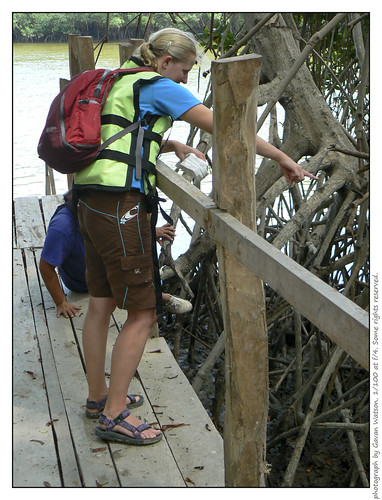
With an area covering more than 151 thousand hectares, this natural area is located in the provinces of Zarumilla, Tumbes and Admiral Villar in the Tumbes and Piura province Sullana. Hills National Park Amotape was created in the year 1975 on 22 of July in order to protect the flora and fauna of the rainforest of the Pacific and the equatorial dry forest of Tumbes region. There are five areas of life that has this natural reserve that is from 120 meters to 1538 meters.
The forest has a very dry climate tropical savanna known as covering most of the Park territory. El Monte thorny tropical, characterized by its aridity and warmth that covers the central portion and extends from the bottom up to 600 m m. The desert scrub Premontane tropical, characterized by its hilly relief and broken. The tropical dry forest, covers the most humid area and this is where lies the greatest amount of biodiversity and higher rainfall, is located above the 300 morel. The pre-montane dry forest, located on the left bank of the river Tumbes, covering most areas of the high and rugged mountains of Amotapes. The importance of Amotape Hills National Park lies in the presence of significant biodiversity of Amazonian origin, where one can see the forest species of high and low, of the Andes and coastal desert. Many species that are home to endemic or endangered flora that characterizes the equatorial dry forest zone is given by carob trees, hualtaco, lignum, polo polo, char, black wood and kapok. In part that covers the tropical Pacific shows the presence of larger trees like the palo de vaca, waistband, cedar, laurel, balsa Pechiche and also in the upper parts of trees grow beautiful orchids.

Amotape Hill National Park is one park that is home to 14 species of birds besides being the protected area with the highest number of threatened species, among which the Dorsigris Hawk, Condor, Perico Macareno, the Cabeinegra and Colaespina guan. Other species that inhabit the park are the alligator Tumbes, Tumbes preserve Monk, The Little Tiger, Jaguar and northwestern Otter. The factors that threaten this habitat is overgrazing by cattle and goats, rainfed agriculture, logging of commercial species ranging desboscando this area, and poaching. There is an urgent need to sensitize the residents of nearby areas to help protect the park, preserving the various species which has its habitat in this region of Peru. Something is going ahead with the implementation of programs of voluntary rangers and environmental education to the inhabitants of these areas.

Persons wishing to visit the park for research purposes shall require a permit corresponding to the INRENA office in Lima, the State institution in charge of this natural resource. Tourists wishing to visit the Parque Nacional Cerros de Amotape will find all the facilities for your stay at the checkpoint entrance to the park with places to stay overnight to have basic services, one of them is the Biological Station rubber. Tourists will visit the park you can do in the months from April to November, which is the best time. In the park there are many trails where you can keep in touch with nature and appreciate the birds from the two viewpoints in the park.
In the city of Tumbes travel agencies are guided tours Amotape National Park. If you are a nature lover, consider visiting one of his trips Hills National Park Amotape in Peru.
Leave a Reply
You must be logged in to post a comment.
Recent Comments